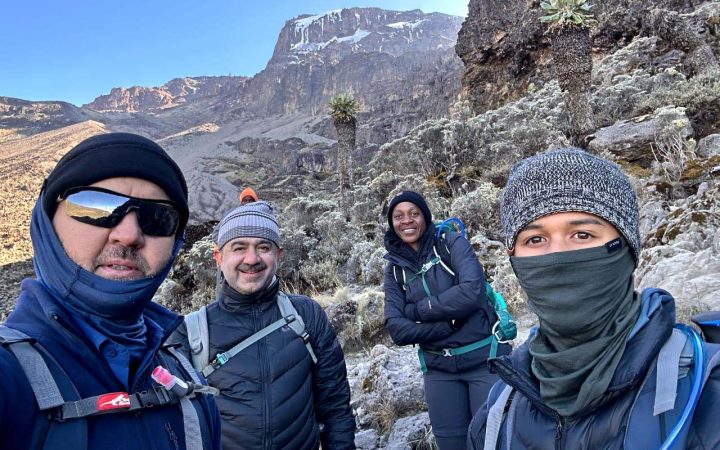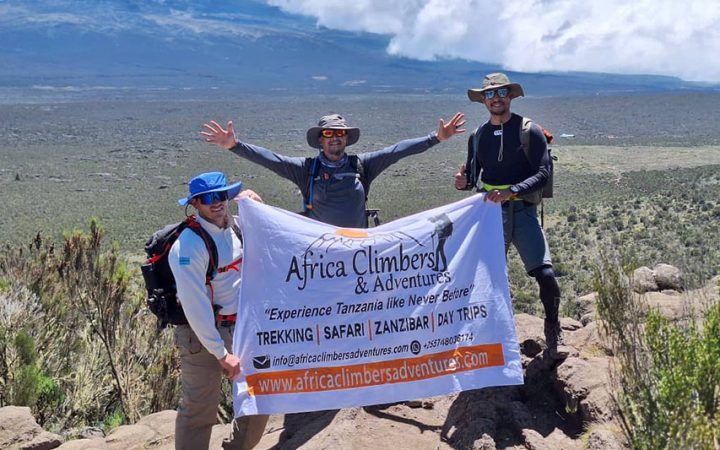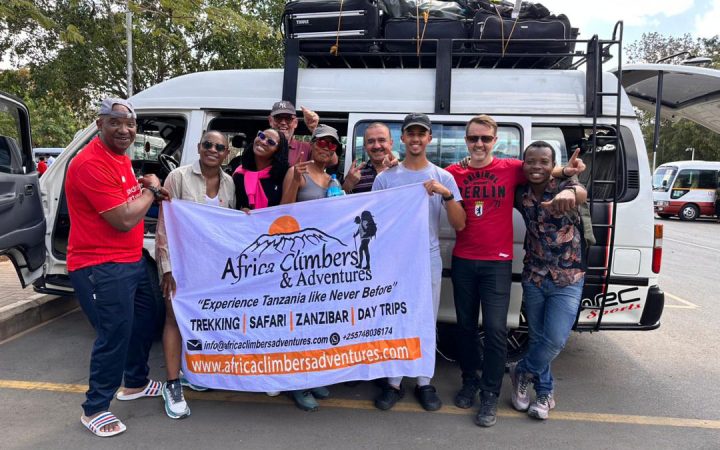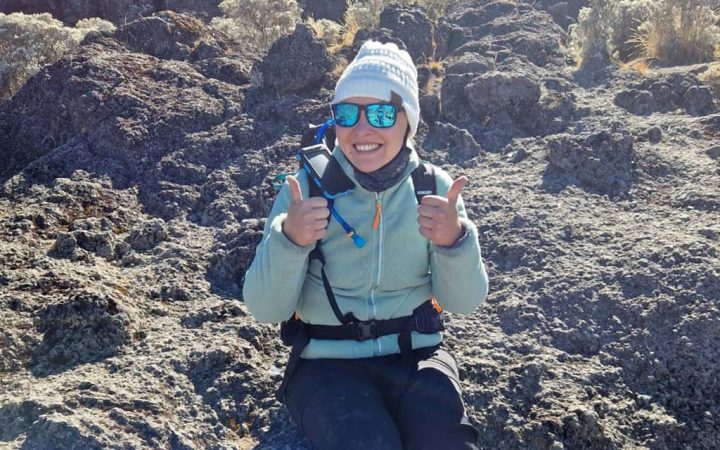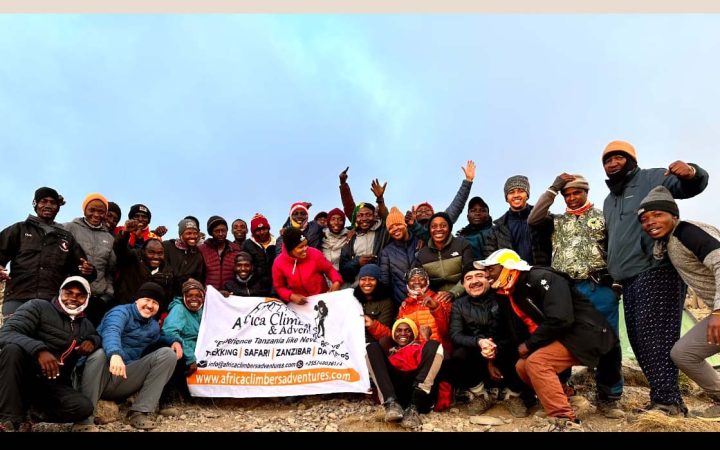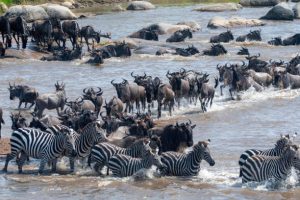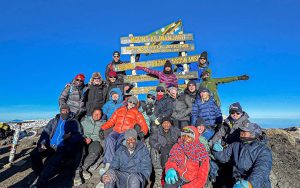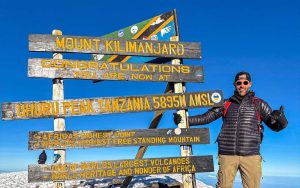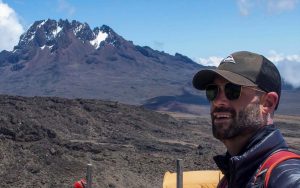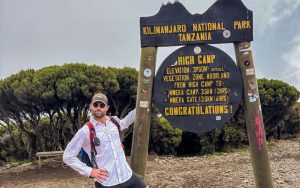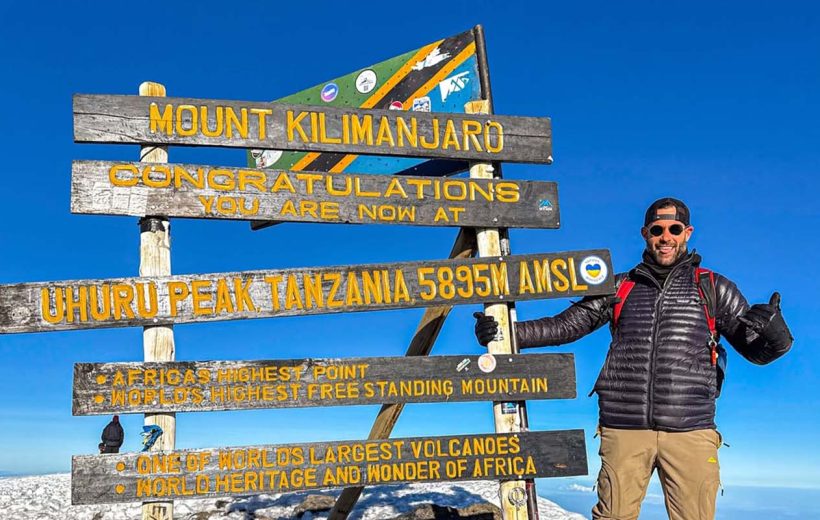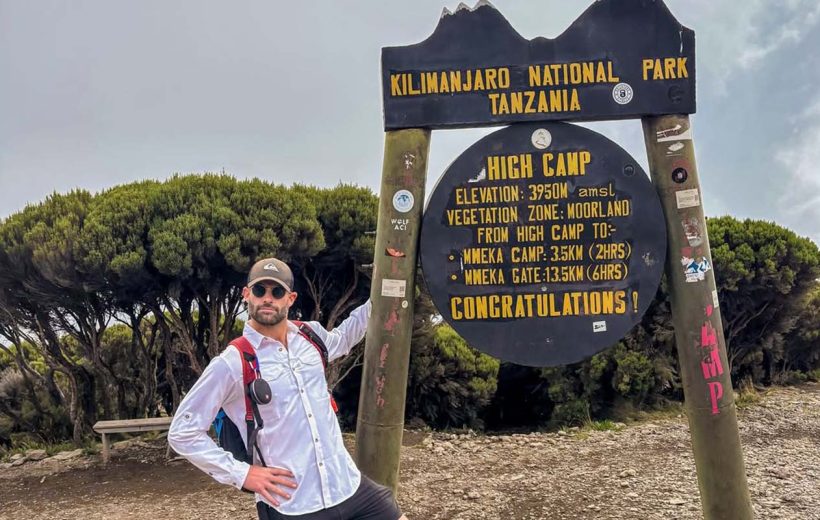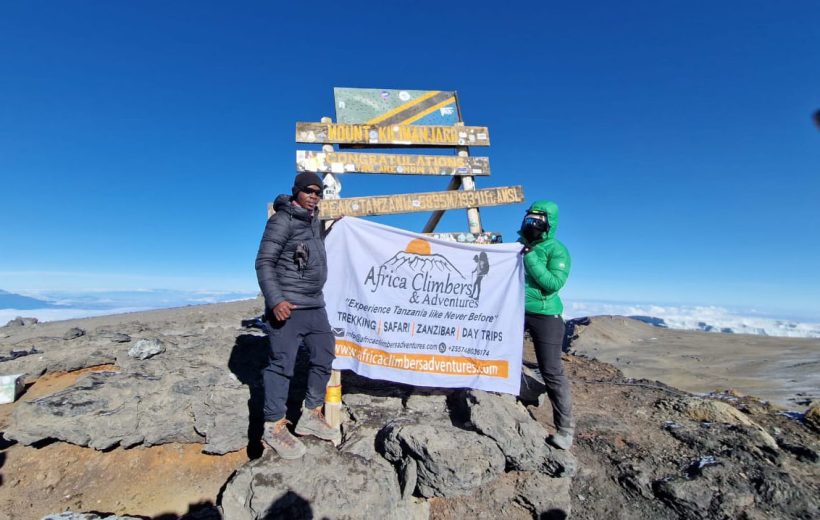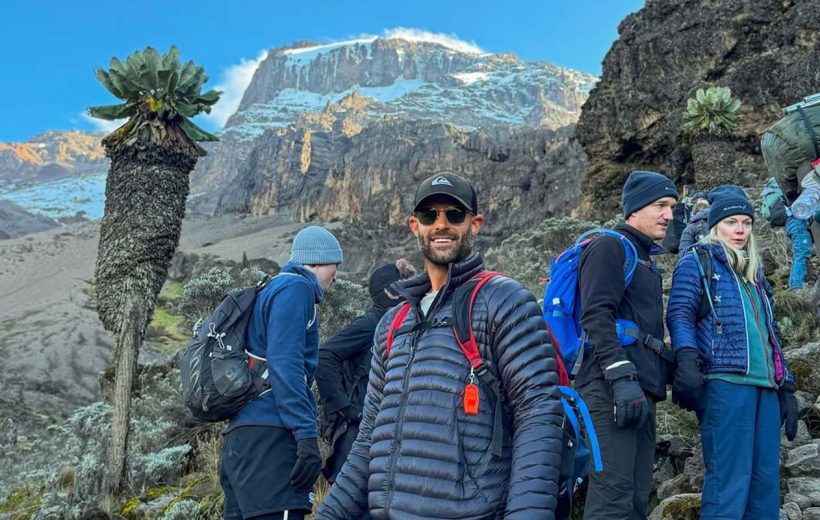Overview
Originally the trail began right against the Kenyan border, though recently the trail shifted eastwards and now starts at the Tanzanian town of Loitokitok, after which the new trail has been named (most trekkers refer to this trail as the Rongai Route).
As this is an isolated route less frequented by trekkers, it is likely that you will encounter wildlife, as animals tend to gather where humans don’t. Trekkers will also be rewarded by the vast number of unique plant life that is prevalent in the rain forest, mooreland and the semi to alpine desert zones.
| Number of Climbers | Price (USD) |
|---|---|
| 1 person | $2250 |
| 2-4 people | $1950 |
| 5-7 people | $1800 |
| 8 or more | $1650 |
Tour Plan
Day 1 : Arival in Tanzania
As you walk out of Kilimanjaro International Airport, an Africa Climber Adventures representative will be there to transfer you to your hotel, where you can relax and take in the African atmosphere.
Preparation for your climb: Before the start of your climb, you will meet your guide, who will brief you and provide advice on what to wear, what to pack, and other essential tips to ensure a comfortable and successful climb.
Day 2 : Hotel - Loitokitok Gate to Simba Camp
Today’s Status
Hiking Time: 3-4 hours
Total Distance: 7 km
Starting Altitude: 1950m (6400ft)
Final Altitude: 2600m (8530ft)
Environment: Montane Forest
After breakfast, we begin the 3-4 hr drive from Arusha and approach Kilimanjaro in counterclockwise direction around the eastern flank of Kilimanjaro through Chagga villages that cling to the mountain slope, up to the border with Kenya before turning in to the Loitokitok Gate.
Our ascent begins in at the small village of Nalemoru 1950m (6400ft) following a trail that winds through lush farmland, pine and cypress forests before ascending into the thick rainforest zone where you may see troupes of black and white colobus monkeys. These monkeys are black with a long ‘cape’ of white hair and a flowing white tail.
We set camp at the edge of the Mooreland zone where the rainforest begins to thin out and panoramic views of the Kenyan plains unfold. In the evening you may hear the unmistakable shrieking call of the tree hyrax.
Day 3 : Simba Camp to Kikelelwa Cave Camp
Today’s Status
Hiking Time: 6-7 hours
Total Distance: 11.8 km
Starting Altitude: 2600m (8530ft)
Final Altitude: 3621m (11811ft)
Environment: Mooreland
Today’s trek begins with a steady ascent up to the ‘Second Cave’ (3450m) with superb views of Kibo and the Eastern ice fields on the crater rim.
Our path is lined by a variety of flowers including Carduus keniensis and bright red gladiolus. After stopping for lunch, we leave the main trail and set out across the moorland on a smaller path towards the jagged peaks of Mawenzi.
As we trek we sight Lobelia deckenii, unique to the Kilimanjaro moorland zone. Our campsite is in a sheltered valley encircled (collocated) with giant senecios (Dendrosencio kilimanjari) near Kikelewa Caves
Day 4 : Kikelelwa Cave Camp to Mawenzi Tarn Hut
Today’s Status
Hiking Time: 3-4 hours
Total Distance: 7 km
Starting Altitude: 3621m (11811ft)
Final Altitude: 4328m (14,200ft)
Environment: Semi-Desert
Our trek today starts gently before a short but steep climb through a forest of senecios before emerging onto the highland desert zone dominated by helichrysum flowers, low heathers and groundsel.
The steep Western slopes of Mawenzi rise abruptly from the surrounding flatness to numerous craggy peaks, the highest point being Hans Meyer peak at a height of about 16990 ft (5149 m).
Our camp is spectacularly situated in a valley directly beneath the towering spires of Mawenzi, offering stunning views of Mawenzi and Kibo.
Your afternoon is free to rest or explore the surrounding area including barrancos (high bluffs) and the tarn (mountain lake) where our campsite is situated.
Day 6 : Mawenzi Tarn Hut to School Hut
Today’s Status
Hiking Time: 5-6 hours
Total Distance: 5 km
Starting Altitude: 4328m (14,200ft)
Final Altitude: 4748m (15,580ft)
Environment: Semi-Desert
We leave camp the way we had come the previous afternoon. Once at the top of the ridge we walk along the undulating trail through the foothills of Mawenzi till we get to the saddle. The saddle is the barren alpine desert between Kibo and Mawenzi.
Barren, except for a few tufts of grass here and there and scattered rocks and the wreckage of a plane.
The trail splits in two, left to Kibo Huts Camp and the one on the right to School Hut where our overnight camp is located. The trails steepens from here on and the going slows down. After stopping for lunch, we continue our steep ascent for the next 2.5 hrs until we arrive at School Hut. The remainder of the day is spent hydrating, eating and taking in our amazing Kibo panorama before retiring early in preparation for the final ascent.
Meals Plan: Breakfast, Lunch, Dinner
Day 7 : School Hut Camp to Uhuru to Summit to Horombo Hut
Today’s Status
Hiking Time: 11-15 hours
Total Distance: 18.5 km
Starting Altitude: 4748m (15,580ft)
Final Altitude: 3700m (12140ft)
Environment: Alpine Desert
After rising early to a warm drink and a light snack, we leave camp at around 6am and begin the most difficult though most rewarding day of the trek – your hike to the roof of Africa. You will ascend northwest on rough scree passing Hans Meyer cave.
After approximately 5-6 hours of slow but strenuous hiking, you will reach Gillmans Point, which is the culmination of the most physically demanding portion of your climb. Here we take a short break to rehydrate and enjoy light snacks.
From here we continue our upward journey arriving at the rim of the main crater, Stella Point (5685m). At this point we stop to rest, eat lunch and take in the views over the clouds. From Stella Point the trail is normally snow-covered, and every step of the 2-hour final ascent to Uhuru peak is challenging. Passing alongside the iridescent blue Rebmann and Tarzel glaciers we reach Elveda Point (5882) we can see Uhuru Peak now only minutes away. The roof of Africa is within your grasp.
Arriving at the summit you feel a huge sense of elation and accomplishment you have done it, you have made it to the highest point in Africa. We spend as much time as you need to appreciate your accomplishment, as this is a day to remember for the rest of your life! The time you will spend on the summit will depend on the weather conditions and temperature.
After capturing our summit photos we retrace our steps via Gillmans and descend to Kibo where we stop to remove extra clothing, take refreshments and continue our descent. Six hours after our summit we arrive at Horombo Hut Camp (3700m).
Meals Plan: Breakfast, Lunch, Dinner
Day 8 : Horombo Hut to Marangu Gate
Today’s Status
Hiking Time: 5-6 hours
Total Distance: 20.4 km
Starting Altitude: 4328m (14,200ft)
Final Altitude: 1830m (6004ft)
Environment: Semi-Desert
Over the next 4 hours we rapidly drop elevation as we descend through the thick montane forest on Kilimanjaro’s southern flank via Mandara Hut (2700m) and finally emerging at the Marangu Gate where we stop for a well-deserved picnic lunch.
Here successful hikers will receive their summit certificates (gold for Uhuru Peak, Green for Stella point) from the Kilimanjaro National Park Authority. Post celebrations, we are taken by either private bus or Jeep to your hotel in Moshi
Day 9 : Depart Tanzania(Breakfast)
Depart Tanzania or continue your dream with amazing safari extensions.
For trekkers not continuing with a safari we provide transfers to Kilimanjaro International Airport or bus station for your onward journey.
Included/Excluded
- Porterage
- Rescue fee
- Park fees (For non-residents)
- All activities (Unless labeled as optional)
- All accommodation (Unless listed as upgrade)
- Camping equipment
- A professional driver/guide
- All transportation (Unless labeled as optional)
- All Taxes/VAT
- Roundtrip airport transfer
- Meals (As specified in the day-by-day section)
- Drinking water (On all days)
- Climbing gear
- International flights (From/to home)
- Additional accommodation before and at the end of the tour
- Sleeping bag
- Bath towels
- Tips (Tipping guideline US$10.00 pp per day)
- Personal items (Souvenirs, travel insurance, visa fees, etc.)
- Government imposed increase of taxes and/or park fees

